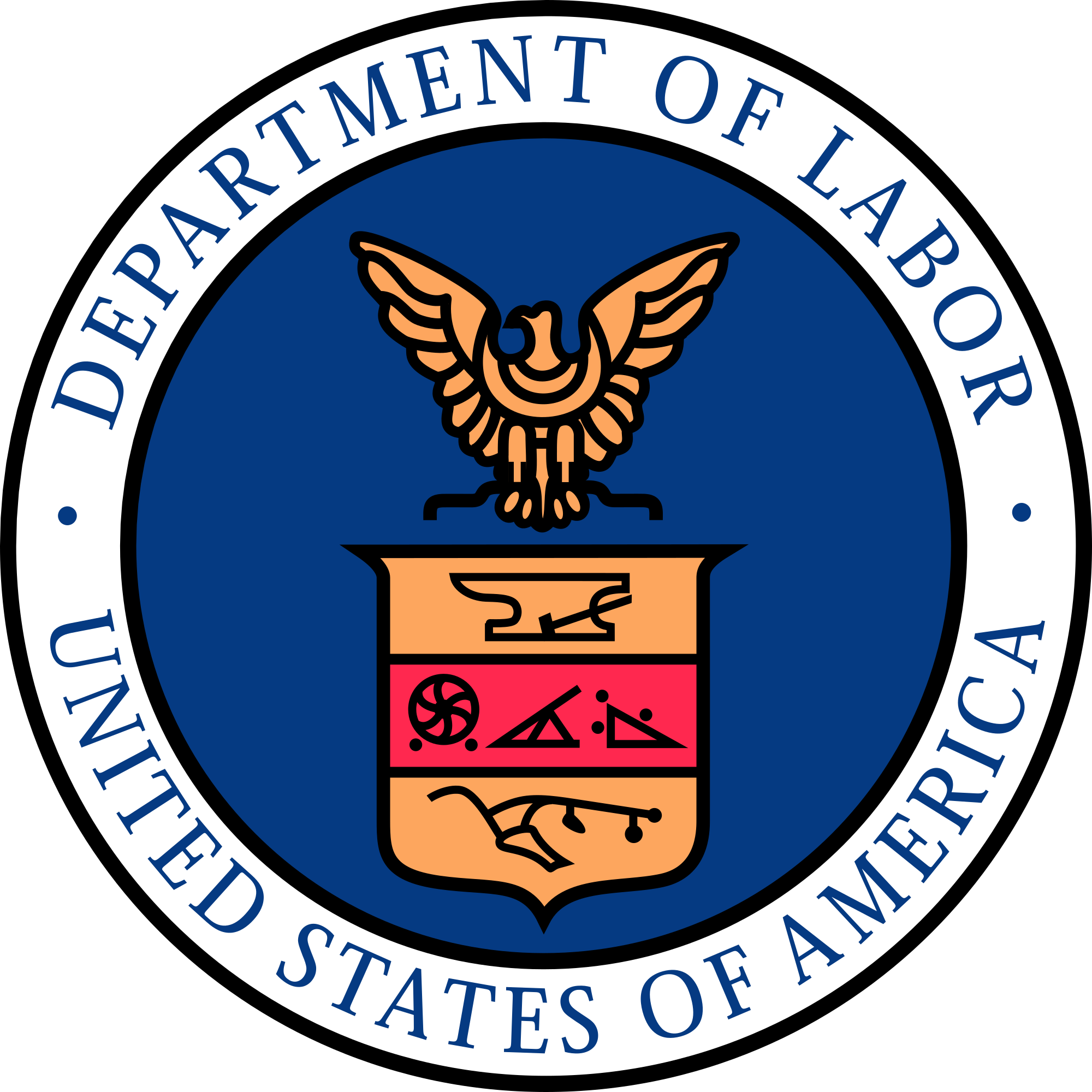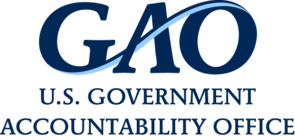 The DE OFCCP Week in Review (WIR) is a simple, fast and direct summary of relevant happenings in the OFCCP regulatory environment, authored by experts John C. Fox, Candee J. Chambers and Cynthia L. Hackerott. In today’s edition, they discuss:
The DE OFCCP Week in Review (WIR) is a simple, fast and direct summary of relevant happenings in the OFCCP regulatory environment, authored by experts John C. Fox, Candee J. Chambers and Cynthia L. Hackerott. In today’s edition, they discuss:
Wednesday, February 14, 2024: US DOL Announced 2023 Equity Action Plan Update
Three OFCCP-Specific Items Included
Multiple Other Agencies Also Posted Updated Plans

- Supporting workers, including those in the Southeast United States;
- Ensuring underserved communities have access to good jobs [“good jobs” is Biden Administration code for union jobs];
- Embedding gender equity into the DOL’s partnerships and services;
- Improving services for individuals with limited English proficiency; and
- Evaluating procurement practices to advance equity, including supporting small, disadvantaged businesses such as Black- and women-owned businesses [the federal courts have repeatedly struck these programs down as unlawfully discriminatory].
The same day that the DOL announced its 2023 EAP, the White House announced that multiple federal agencies, including all Cabinet-level agencies, had released their 2023 EAPs. These EAPs are designed to identify methods to assess the equity of agency policies and actions.
As to OFCCP, the DOL’s 2023 EAP update mentions the agency as follows:
- On page18 – it states that OFCCP will expand agency partnerships in its Megaproject Program;
- On page 22 – it says that “OFCCP intends to develop a best practices document outlining how federal contractors and subcontractors can create safe environments free from gender-based violence and harassment;” and
- Also on page 22 – the EAP states: “In anticipation of the FAR Council’s rulemaking prohibiting salary history inquiries by federal contractors, OFCCP plans to publish sub-regulatory guidance clarifying how reliance on salary history for hiring and compensation decisions may result in discrimination under Executive Order 11246.” (Note: We recently reported on OFCCP’s addition, at the end of January, of ten new FAQs on “Compensation History.”)
The DOL’s 2023 EAP update also includes a progress update on the Department’s 2022 Equity Action Plan. Additional information is available on the landing page here.
The various agencies’ Equity Action Plans are cataloged on this website.
As of our WIR publication deadline, the EEOC had not yet announced its 2023 Equity Action Plan update.
The Office of Personnel Management’s updated EAP is here.
For additional background, see our April 2022 reports on the initial 2022 EAPs here, here, and here.
Thursday, February 15, 2024: GAO Issued Three Frank, Blunt, & Shocking Warning Reports that U.S. Fiscal Health is Not Good & Federal Government Spending is Not Sustainable

Report 2: “Congress and the administration will need to make difficult budgetary and policy decisions to address the key drivers of federal debt,” GAO wrote as it began its second report the next day on February 16: “A Warning About the Nation’s Fiscal Health.” That report went on to foreshadow its third report issued the same day by further stating: “Reliable federal financial statements are critical to help policymakers make these important decisions. But we have reviewed the government’s bookkeeping and continue to find weaknesses that undermine its reliability.”
Report 3: “[The GAO] is again unable to determine if the federal government’s consolidated financial statements are reliable. This year’s audit report discusses progress that has been made, but also underscores that much work remains to improve federal financial management and highlights that the federal government continues to be on an unsustainable long-term fiscal path:” “GAO Unable to Provide an Opinion on the U.S. Government’s Financial Statements.”
GAO – often called the “congressional watchdog” – describes itself as:
“an independent, non-partisan agency that works for Congress. GAO examines how taxpayer dollars are spent and provides Congress and federal agencies with objective, non-partisan, fact-based information to help the government save money and work more efficiently.”
Furthermore, it is “the supreme audit institution for the United States. Federal and state auditors look to GAO to provide standards for internal controls, financial audits, and other types of government audits.”
GAO summarized its first report on February 15th by stating:
“The federal government faces an unsustainable long-term fiscal path that poses serious economic, security, and social challenges if not addressed. Our review of the nation’s fiscal health found:
- Debt is projected to grow faster than the economy, reaching 200% of GDP by 2050 if revenue and spending policies are unchanged
- Large budget deficits drive the growing debt, as Medicare and Social Security spending outpace revenue
- Government interest spending as a share of GDP will reach an all-time high by 2030, in part due to rising interest rates
We suggested developing a plan for fiscal sustainability and identified pieces of an effective plan.”
The February 15th GAO report highlights section also warned that:
“Debt is Projected to Grow Faster than the Economy Over the Long Term
At the end of fiscal year 2023, the $26.2 trillion in debt held by the public was about 97 percent of gross domestic product (GDP). GAO projects that under current revenue and spending policies, debt held by the public will:
- reach its historical high of 106 percent of GDP by 2028, and
- grow more than twice as fast as the economy over a 30-year period, reaching 200 percent of GDP by 2050.
Perpetually rising debt as a share of GDP is unsustainable and has many direct and indirect implications on the economy and American households and individuals.”
Editor’s Note: The U.S. National Debt Clock reported the U.S. federal debt to be $34,235,571,438,061 ($34 Trillion and change) as of Friday, February 16, 2024, at 11 am EST, and growing at a rate of $5.2 Billion per day (or almost $2M per minute). Debt will continue to grow at that daily rate for the next 10 years according to MarketWatch.
The GAO’s second report warned not only that the trust funds supporting both Medicare and Social Security will (again) “be depleted within 10 years,” but also that:
“Our declining fiscal health isn’t because of one administration or one decision. Every year that the government runs a deficit—where it spends more than it collects in revenues (primarily taxes)—it must borrow to make up the difference. The federal government has run a deficit for decades.
Other factors have also contributed to our growing debt. For example, last year’s rising interest rates meant that it cost us more to borrow money.
We have consistently urged Congress to develop a plan for fiscal sustainability and we identified components needed for this plan to be effective. This plan would mean addressing unsustainable spending and revenue policies, and reducing the nation’s need to borrow.
An effective plan includes several key components. Among them:
-
Review mandatory and discretionary spending and revenue—including tax expenditures, such as deductions and tax credits.
-
Address financing gaps for Medicare and Social Security, both of which are supported by trust funds that will be depleted within 10 years.”
EDITOR’S NOTE REGARDING THE IMPLICATIONS OF THE GAO WARNING REPORTS: The implications of the GAO reports are widespread and staggering given that the reports singled out the need for reform of both “mandatory” (i.e., Medicare and Social Security) and “discretionary” spending budgets (i.e., federal agency annual budgets). Discretionary spending budgets have been a political lightning rod in almost every federal budget debate for the last decade and the mandatory budget has been politically untouchable (the “third rail”) since the federal taxpayers last bailed it out in 2010 to prevent it from (again) going bankrupt.
While GAO is a strictly non-partisan federal accounting agency of the United States Congress, it’s three new reports certainly strengthens the hand of the Republican Freedom Caucus in the current budget debates. The Freedom Caucus has been the “thorn in the side” of Congress holding up passage of the 12 federal budget bills Congress needs to pass yearly to the President to sign into law to annually fund the federal Government.
The Freedom Caucus has steadfastly opposed continued unchecked federal spending which has already led to two budget agreement impasses in this Fiscal Year 2024. The federal government, thus far unable to agree upon spending limits, will next face the third federal budget crisis of the year in early March when the two Congressional “Continuing Budget Resolutions” providing the federal agencies with their budgets at the level of the prior Fiscal Year (2023) expire on March 1 and March 8, 2024. See our Week In Review story on the last budget impasse Congress only temporarily resolved on January 19, 2024.
The GAO Fiscal Health Reports suggest the need for potential (personal and corporate) tax increases, federal agency budget cuts, increases in payments for Social Security and Medicare or decreases in benefits, or all of the above. Tough choices continue to lie ahead for all as the sound of the waves crashing down upon us increases with the GAO’s frank reminder reports.
In Brief
Wednesday, February 14, 2023: U.S. EEOC Published Interim Final Rule Amending Procedural & Administrative Regulations to Include PWFA

In its Fall 2023 Regulatory Agenda, the EEOC slated November 2023 as its target date for publication of this Interim Final Rule. Thus, the Commission published about three months behind its target date.
Wednesday, February 14, 2023: OFCCP Announced Unspecified Updates to Its VEVRAA FAQs & “Promising Practices” Webpages

The VEVRAA FAQ update is dated February 12, 2024 (see the bottom of the FAQ page), but there is no indication as to precisely what FAQ items were updated. Similarly, the VEVRAA Promising Practices webpage shows a February 9, 2024 update (again at the bottom of the page), and again no indication as to precisely what OFCCP updated.
Thursday, February 15, 2024: OFCCP Filed Notice of Appeal in EEO-1 FOIA Disclosure Case
Agency Also Updated Its “Submitter Notice Response Portal” For 1st Time Since April 2023

In a related development, OFCCP this past week updated its “Submitter Notice Portal” to add a discussion of the district court judge’s December 22, 2023, ruling. As we reported last month, the last time OFCCP updated the portal webpage was in April 2023, when the agency reported it would continue to evaluate contractor objections through at least the end of September 2023.
The update is as follows:
“Additional Information: Notice of Litigation
On April 2023, a court order in the matter of Center for Investigative Reporting v. U.S. Department of Labor, 3:22-cv-07182-WHA (N.D. Cal.), directed DOL to file a motion for summary judgment based on six “bellwether” objecting contractors to determine whether the requested Type 2 EEO-1 diversity reports are exempt from disclosure under FOIA Exemption 4. Following briefing on the motions, the district court ruled on December 22, 2023, that DOL had not demonstrated “the inherently commercial nature of the diversity data” and therefore the EEO-1 reports could not be considered “commercial information” under FOIA Exemption 4. The Court also ruled that “there is no commercial gain to be found in the headcount or demographic data within the EEO-1 report” and therefore there could be “no compounded effect by releasing five years’ worth of data to plaintiffs.” The court did not reach the Exemption 4 confidentiality question because both the commerciality and confidentiality prongs must be met to support withholding the reports under Exemption 4.
OFCCP was ordered to produce the remaining EEO-1 reports at issue within 28 days of the date of the order. On December 28, 2023, the court granted a stipulation to extend the deadline for release of the EEO-1 reports at issue to February 20, 2024. OFCCP is currently evaluating the court decision and potential next steps and will provide further information or guidance once the evaluation process has concluded.”
Thursday, February 15, 2024: US DOL ETA Extended to May 13 Comment Period on Revising “Schedule A” Labor Certifications in Light of AI Development Needs

In December, the US DOL ETA formally published the RFI in the Federal Register (our story is here). The ETA first announced this RFI on December 15, 2023 (see our story here.)
Friday, February 16, 2024: An Employer’s Failure to Post EEOC Employee Rights Notice Will Now Cost $680 Per Violation
New Penalty Reflects 3.2 Percentage Increase

History of Adjustments
- 2023 from $612 to $659 per violation
- 2022 from $576 to $612 per violation
- 2021 from $525 to $576 per violation
- 2016 from $210 to $525 per violation
- 2014 from $110 to $210 per violation
- 1997 from $100 to $110 per violation
On a related note, we reported back in January that the U.S. Department of Labor similarly adjusted its civil monetary penalties.
Friday, February 16, 2024: EEOC Published Final Rule Formally Revoking Long Defunct EEOC Conciliation Process Transparency Reforms

How We Got Here
As WIR readers may recall, on October 9, 2020, the Commission published a proposal to amend its procedural rules governing the conciliation process (see our story here). The EEOC published its Final Rule, titled “Update of Commission’s Conciliation Procedures,” in the Federal Register on January 14, 2021 (our story is here). The Final Rule, which outlined the information that the Commission must provide when undertaking conciliation efforts for charges alleging violations of Title VII of the Civil Rights Act of 1964, the Americans with Disabilities Act of 1990, the Genetic Information Nondiscrimination Act of 2008, and the Age Discrimination in Employment Act of 1967, took effect on February 16, 2021.
On May 19, 2021, the U.S. Senate passed a joint resolution (S.J. Res. 13) disapproving that Final Rule under the Congressional Review Act (“CRA”) (our story is here). The U.S. House of Representatives passed S.J. Res. 13 on June 24, 2021 (our story is here). President Biden signed the joint resolution into law as Public Law 117–22 on June 30, 2021 (our story is here). Thus, under that law and by operation of the CRA, the Final Rule had no force or effect. Accordingly, the EEOC’s Federal Register notice on Friday constituted the official Final Rule to implement the CRA revocation. In addition, that Federal Register notice removed the long defunct (since 2021) Final EEOC Rule on Conciliation Procedures from the Code of Federal Regulations.
Looking Ahead:
Upcoming Date Reminders
There are three NEW items added to our calendar this week:
November 2023: EEOC’s target date (now overdue) to publish its NPRM to amend its regulations on exemptions to certain recordkeeping and reporting requirements (RIN: 3046-AB28)
December 29, 2023: Statutory deadline (now overdue) for EEOC to finalize regulations to enforce the Pregnant Workers Fairness Act (RIN: 3046-AB30); EEOC submitted its Final Rule for OMB review on December 27, 2023
December 2023: U.S. OSHA’s current target date (now overdue) to publish its Final Rule on Occupational Exposure to COVID-19 in Healthcare Settings (RIN: 1218-AD36)
February 26, 2024: Effective date of NLRB’s Final Rule on Standard for Determining Joint-Employer Status under the NLRA (previous December 26, 2023, effective date extended)
February 27, 2024 (11:00 – 5:30 EST): US DOL WHD online seminar on prevailing wage requirements for federally-funded construction projects; register here
March 1, 2024: Expiration date for Continuing Resolution to fund the Departments of Transportation, Housing & Urban Development, Energy, Veterans Affairs, and Agriculture at current levels
March 8, 2024: Expiration date for Continuing Resolution to fund certain government agencies – including the US DOL/OFCCP, the EEOC, and the NLRB – at current levels
March 11, 2024: Effective date for US DOL WHD’s Final Rule on Employee or Independent Contractor Classification Under the Fair Labor Standards Act
March 18, 2024: Comments due on US DOL ETA’s proposal to Modernize its Registered Apprenticeship Regulations
March 19, 2024: Comment deadline for US DOL VETS request to extend – without change – the Information Collection Requirement for its HIRE Vets Medallion Program
March 2024: EEOC’s target date for proposal to amend its regulations regarding the electronic posting of the “Know Your Rights” Poster (RIN: 3046-AB29)
March 2024: U.S. NLRB’s target date for its Final Election Protection Rule (RIN: 3142-AA22)
April 1, 2024: Comments due on FAR Council’s Proposed Rule on “Pay Equity and Transparency in Federal Contracting”
April 3 – April 5, 2024: DEAMcon24 New Orleans – The DEAMcon24 Program is now live!
NEW April 15, 2024: Comments due on EEOC’s Interim Final Rule to Amend Procedural & Administrative Regulations to Include the Pregnant Workers Fairness Act
NEW April 30, 2024: Deadline to apply for 2024 HIRE Vets Medallion Award – https://www.hirevets.gov/
April 2024: U.S. DOL WHD’s current target date for its Final Rule on Defining and Delimiting the Exemptions for Executive, Administrative, Professional, Outside Sales, and Computer Employees (Overtime Rule) (RIN: 1235-AA39)
NEW May 13, 2024: Deadline for comments on US DOL’s Request for Information seeking public input on whether to revise the list of Schedule A job classifications that do not require permanent labor certifications to include occupations in Science, Technology, Engineering & Mathematics (“STEM”) & other non-STEM occupations; previous February 20, 2024 deadline extended
May 15, 2024 (11:00 – 5:30 EST): US DOL WHD online seminar on prevailing wage requirements for federally-funded construction projects; register here
May 2024: FAR Council’s target date for its Final Rule to Prohibit TikTok [or any successor application or service developed or provided by ByteDance Limited] on Federal Government Contractor Devices (RIN: 9000-AO58); the Interim Rule is here
August 29, 2024 (11:00 – 5:30 EST): US DOL WHD online seminar on prevailing wage requirements for federally-funded construction projects; register here
September 2024: OFCCP’s current target date for its Notice of Proposed Rulemaking to “Modernize” Supply & Service Contractor Regulations (RIN: 1250-AA13)
September 2024: OFCCP’s current target date for its Final Rule on “Technical Amendments” to Update Jurisdictional Thresholds & Remove Gender Assumptive Pronouns (RIN: 1250-AA16)
September 2024: EEOC’s anticipated date for amending its FOIA procedures to add fees for electronic disclosure of records (RIN: 3046-AB20).
September 2024: U.S. DOL WHD’s target date to publish an NPRM on “Employment of Workers With Disabilities Under Special Certificates” (Subminimum Wage Rule) (RIN: 1235-AA14)
THIS COLUMN IS MEANT TO ASSIST IN A GENERAL UNDERSTANDING OF THE CURRENT LAW AND PRACTICE RELATING TO OFCCP. IT IS NOT TO BE REGARDED AS LEGAL ADVICE. COMPANIES OR INDIVIDUALS WITH PARTICULAR QUESTIONS SHOULD SEEK ADVICE OF COUNSEL.
SUBSCRIBE.
Subscribe to receive alerts, news and updates on all things related to OFCCP compliance as it applies to federal contractors.
OFCCP Compliance Text Alerts
Get OFCCP compliance alerts on your cell phone. Text the word compliance to 18668693326 and confirm your subscription. Provider message and data rates may apply.


